Frost in Attics: why is there Ice in my roof?
When a warm sunny day arrives after a long cold stretch and it seems like you have a roof leak when there isn't a cloud in the sky, it's probably Attic Icing,也被称为冰坝或冰坝,令人惊讶的是,不太可能是屋顶覆盖本身的问题。
Frost and ice forms in attics when warm, humid air accumulates and condenses on the underside of your roof sheathing. Depending on the temperature, and theinsolation(ie. can sun get to the roof) you will have either frost or water collecting. A little bit of frost forming is not unusual after really low nighttime temperatures, and it isn't a huge problem if it is able to melt and evaporate so that the wood can dry.
However, it becomes a more serious problem when the quantity of frost isn't able to evaporate before more starts to accumulate. The longer this goes on, the greater volume of ice you will have building up and the greater volume of water you may have leaking down into the ceiling and wall when it finally warms up enough to melt.
If you're further baffled by frost forming on one side and not the others, you're probably looking at the north side. The sun will sometimes warm the south side enough to thaw and evaporate moisture but leave it still coated on the north side - again, not a problem unless the ice starts to build up.
许多家庭在美国和加拿大北部地区遭受冰堆积在阁楼,但房主往往忽略它,除非它会导致一个巨大的问题,主要是因为他们没有意识到它的发生,直到有一个问题——很像怪物的冰在冰箱的顶部形成的密封是否有缺陷——冰大坝造成的温暖和相对潮湿的空气泄漏从家到一个不够通风屋顶空间,冷凝,形成冰。
What causes ice in attics?
Attic ice problems happen when there's a combination of 3 issues with a home's building envelope - and the thing that most often alerts home owners that a problem exists is a wet patch in the drywall on the edge of ceilings or the top of walls during the spring thaw. Most homeowners assume they have a roof problem like a leak, that maybe their roof covering has been damaged over winter, but it probably isn't if the problem wasn't there before. Ironically, in our experience, ice often forms in the attic afterDIY roof insulation projects新的绝缘材料覆盖了通风通道。If you discover you have ice in the attic, the 3 things to check first are:
- Humidity levels in the Home -do you have high humidity and condensation problems?
- Attic ventilation - Is your attic ventilated correctly and sufficiently?
- Air leakage from the ceiling - Is theceiling vapor barrierintact and doing its job?
There are 3 different issues to check for and to deal with to fix the problem of ice buildup in an attic, and you really should work towards accomplishing all of them.
1. High humidity in homes
First of all, if the relative humidity of air in your home is too high, work to lower it. Anything over 50% RH is a bit much; 35-40% or so is good for humans and houses alike. The more humid the conditioned space of your home is, the more condensation you will probably have in the home, and also have in the attic.
You can reduce humidity by remembering to use bathroom and kitchen fans when showering and cooking, run a dehumidifier in the basement if needed, and don't hang laundry to dry indoors, unless of course your humidity is down around the 30% RH level then go for it. It will save some dryer energy and a little more humidity will make for a more comfortable living space. If you havehigh humidity problems in the home, here's the guides on how to fix itandif condensation on the windows is a problem and needs fixing, here's the guide for that.
2. Attic ventilation:

Next, roof ventilation -make sure your attic is properly ventilated.Check the attic to make sure that insulation isn't jammed down on the edges and blocking soffit vents. Proper ventilation - proper air flow - in a roof keeps it in good dry and sound condition, so make sure there are air baffles on the roof deck so that air can pass through from the soffit, and a simple way to check this is while wearing appropriate safety equipment for handling insulation products, carefully put head and shoulders into the unconditioned attic space with the lights off, shut eyes tight for 30 seconds, then look around the lowest edges of the roof. If there is light coming through from all around the edges of the roof, the ventilation is probably fine. If not, chances are that when someone added insulation, they pushed it down all the edges and blocked air circulation - not good! There should also be a good vent at the top. Andrightat the top, either a ridge vent, or another we like is the 'Maximum' vent (or any similar design); it has really good draw.
Vents on gable ends are not great as they leave the very peak neglected. If gable vents are what you currently have, you're better off sealing them and adding one at the top. And be sure to seal them; if you forget and leave them open, they will limit the effectiveness of better ones you just installed.

一些建筑工人担心山脊上的通风口不够,因为它们会被雪堵住,但雪不是空气屏障。它会减慢空气的流动速度,但只要通风口延伸到屋顶的长度,就应该有足够的空气流动。如果你不惊慌,呼吸缓慢,你显然可以在雪崩中被埋后存活(一段时间)。由于屋顶不容易发生恐慌,按照这个逻辑,如果被雪覆盖,它们应该可以进行适当的通风。
3. Ceiling air barriers:
Lastly, but importantly, you should try to deal with any air leakage if you have ice forming in the attic. Electrical fixtures like diy recessed lighting or pot lights are notoriously leaky (and this may be better left to qualified electricians) but there are airtight boxes available that should be installed and that also hold insulation off areas that may get hot if still using incandescent bulbs. The best solution all around is toreplace old, leaky and incandescent light fittings with modern slimline LED fittings- carefully sealed against air leakage and saving energy too.
Another solution that isn't very complicated (or much fun for that matter) is dealing with these leaks from above. That would be you on your hands and knees in a dark attic crawling between trusses with a headlamp on, and if you've any sense all the safety gear like masks and goggles. Stumbling around, likely letting out the occasional curse word as you bang your head, cut your scalp on the nails hanging through the sheathing or jam your knee on a wooden block (or worse still a stray framing nail) while blind from the perspiration running into your eyes.
这一步也需要拆除隔热层,所以就我个人而言——我已经“去过那里,做过那个”,我把这项工作留给了隔热专业人士——但如果你晚上在阁楼上,下面的灯是开着的,任何光线通过的地方,空气也会通过。用任何方法密封这些孔-胶带,嵌缝,喷泡沫,隔音胶等,但要记住,你必须防止过度的热量积聚在照明设备,接线盒等。Also worth noting, we wouldn't even suggest touching anything up there if in an older home that might still have knob-and-tube wiring - get this replaced first.
但是,如果你根本没有空气屏障,你真的需要一个。这需要提升绝缘材料,在整个表面铺设聚乙烯蒸汽屏障(它可以在搁栅上上下移动),然后重新安装绝缘材料。确保poly在接缝处和侧面都有很好的胶带,如果它让空气在外部边缘流动起来,它将起到很小的作用。当你拖着它到处走的时候,注意不要撕裂它,如果你撕裂了,用胶带粘住。祝你好运——我们已经看到了足够多的旧阁楼,不会羡慕任何人完成这项任务。
Important to note as well, because it will likely come up if engaging contractors to help, that spray foam will also work to seal air leaks and add insulation. In the unfortunate situation of having no air barrier but a truss system that makes a poly air barrier impossible to install from above, spray foam may be the only solution.
We've generally steered our readers way from spray foam products in the past due in part to health concerns, but mostly to the very high Green House Gas emmissions from spray foam blowing agents.
However 2020 has seen great news about thereduced global warming impact of spray foam, as several manufacturers switch to less harmful blowing agents, read more here.
Now you knowall about frost in attics: what causes attic ice & how to fix it, findmoreinfo pages about ice dams & ice dammingas well assustainable home improvement & resilient green building techniqueshere :
Also findall about sustainable home construction in the EcoHomeGreen Building Guide pages |


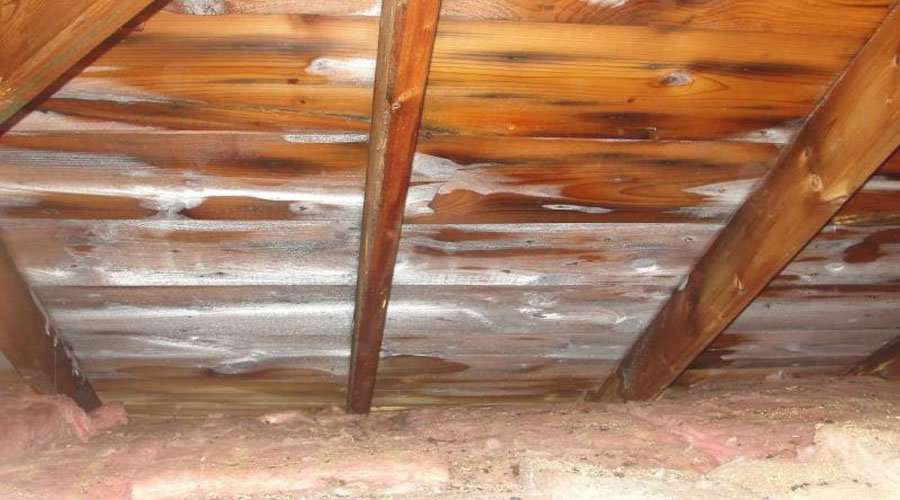











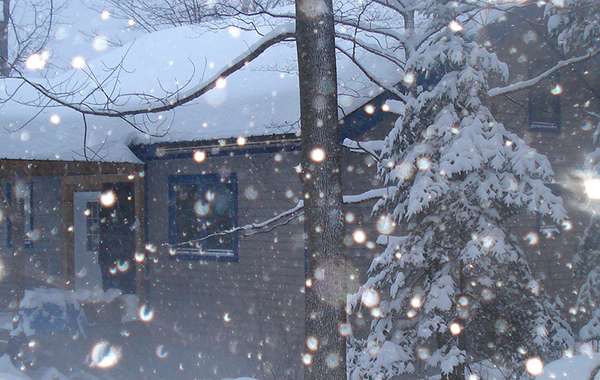
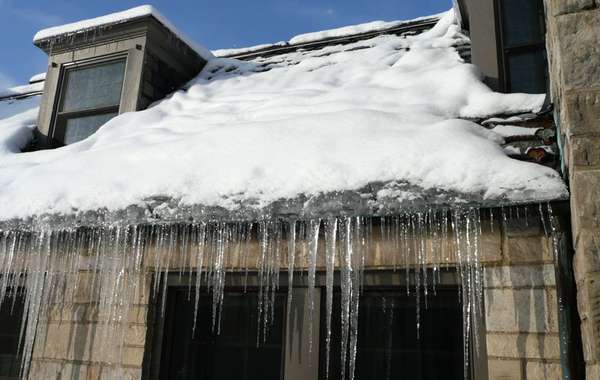
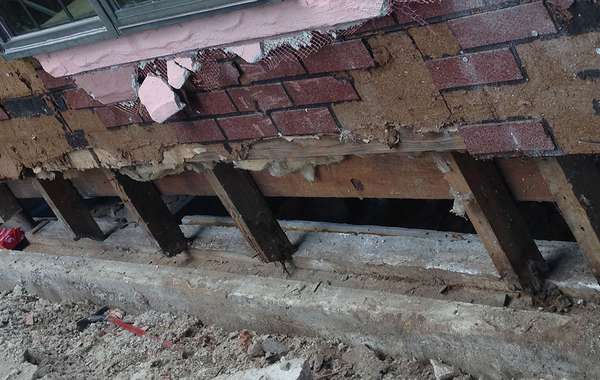
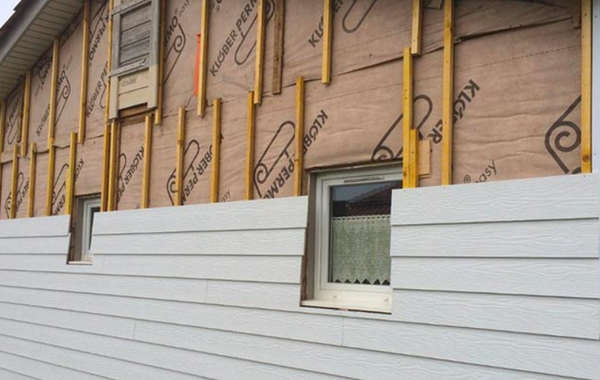
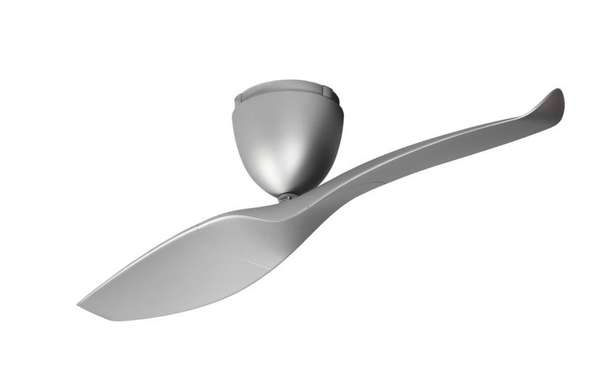
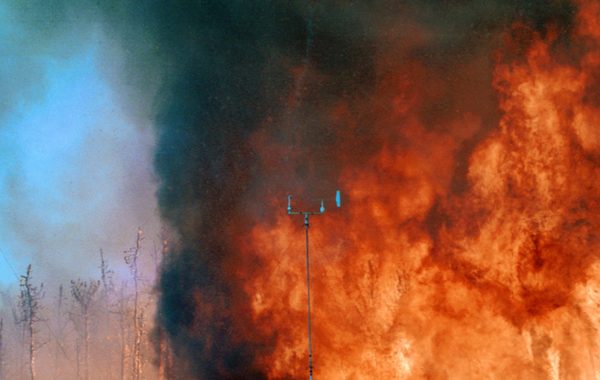
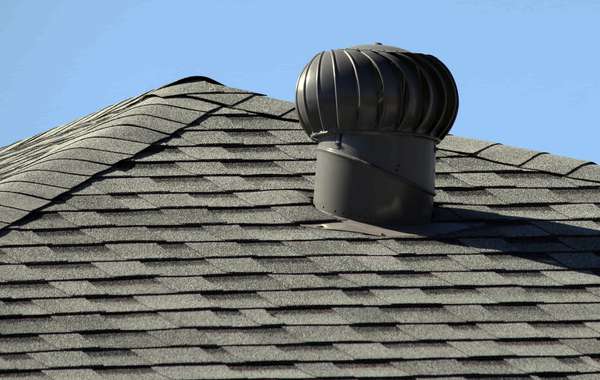
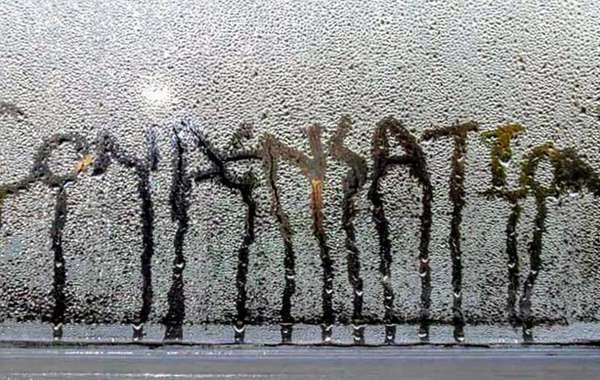
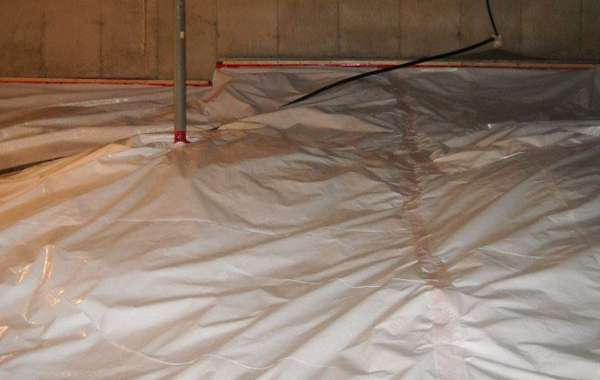
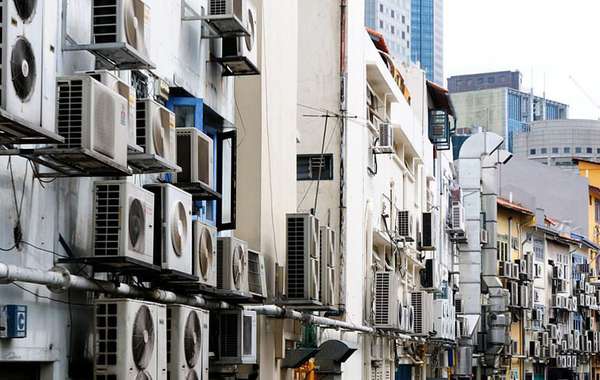
As a practising roofer and consultant, I will note that ANY appearance of frost inside the attic, especially if it is vented, is a troubling sign. During winter, there are usually three sources of humidity in an attic: 1) a leak, 2) air infiltration from the living spaces, and 3) incorrect venting of kitchen, bathroom, washer, drier or plumbing vents. It is highly unusual for there being enough moisture in ambient winter air to form condensation (frost) on the underside of the roof deck in winter.
渗漏产生的水分通常意味着有一个冰坝,水在压力下进入屋顶系统。短期的解决办法是拆除冰坝,正确的解决办法是保证保温通风充足,从一开始就防止冰坝形成。
Air infiltration from the living spaces is the more common cause of higher moisture levels in attic, and that needs to be solved by doing a good job sealing all the places where air can enter such as light fixture boxes, attic trap doors, etc.
Incorrectly vented outlet vents from appliances or rooms (kitchen, bathroom) or plumbing vents is unfortunately relatively common. The solution is usually to identify the source of the moisture, and connect an appropriate pipe to vent this outlet to the exterior. We see this when a renovation contractor "forgot" to connect the outlet to a vent on the roof.
If the air barrier is properly functioning, then the interior (living space) humidity should not have any appearance in the attic. Therefore, my suggestion is that IF one finds frost in the attic, one first has to identify which of the three causes is contributing to the problem. If it's due to air infiltration from the living space, then air-sealing should be the FIRST thing you do, not the last. However, our experience is that most of the time we can trace the frost to moisture entering the attic through a poorly installed vent that either leaks moist air, or just vents directly into the attic space.
Hi. We have had this exact picture in our Attic/dead air space, and believe we have figured out the cause. However there was a day it got above freezing and that frost thawed. Do you think this little bit of frost on the underside would be cause for concern with it melting and running down the underside of the ceiling and down the wall... It only thawed and did this once so I'm hoping the insulation and anything else it got wet will dry and be ok...?
Hi Katie,
As Paul wrote above, any frost in there would concern me. If you have frost forming in your attic that means you have high humidity, and there must be a reason. Without details it's hard to say what the cause is, as well as what the solution is. You say you think you figured it out, what did you up with? It's not great for insulation to get wet so feel free to leave more details, I'd like to help you sort this out. Let me know what sort of insulation and how much, if there is a poly vapour barrier, vents on the roof or the gable ends, etc. And one thing to check immediately is if you have a bathroom fan that vents into the attic instead of outdoors. Regards, Mike
好的,开始吧。我们有一个带车库的长方形房子。拱形天花板。山脊上的通风口贯穿整个94英尺的房子和车库。34' X 34'车库上方的阁楼空间,未绝缘。我说的阁楼空间是指阁楼桁架和屋顶是10/12沥青,所以不仅仅是用来爬行的。其他一切都是绝缘的,包括车库。车库的地板是用辐射热加热的,还有一个排水沟。所以我们想,冬天的时候,我们可以用水管把车上的盐和灰尘都洗掉。在这之后不久,天气就超过了冰点,我们家开始下起了“雨”。 After getting everything cleaned up and fans blowing to dry insulation, We bought a humidity tester. In our heated garage the humidity was about 70-75%. I believe all the steam and moisture from washing vehicles went up to the Attic space and froze to the underside of the wood throughout the house. We put a dehumidifier in the garage and it now runs about 45%. When we pull cold/damp vehicles in from outside it goes up to about 55% but then goes back down. (The humidity inside the house is about 25%-30%). We are still getting little frozen balls on the bottom side of the screws in the Attic area on the ceiling so it has been determined we need more ventilation. The metal roofing company said 94' of distance might be too long of a span for a ridge vent alone. We are going to start by putting a ventilation fan with louvres in the Gable end of the Attic. This fan will also have a humidistat on it to turn on when the humidity is high and then off when lower. If this doesn't completely fix the problem then we will think about installing another one on the other Gable end at the other end of the house, but that will prove much harder as that whole end is finished. Any suggestions would be great. We are trying to prevent adding anything to the roof because not only will it be hard to install, the more "things" on a roof the higher chance of leaking.
Thanks
Katie
Hi Katie, that’s different that I was expecting to hear, and I think you definitely found the source of moisture.
I’m confused about your attic - you say it is uninsulated but just after you say the insulation includes the garage, so in case it is not insulated, it really should be. That would also make me wonder if you have an air and vapour barrier in the ceiling. I say that because it seems like a pretty big oversight to heat a garage but not insulate it, and if that was missed then maybe there is no polyethylene barrier either, which would explain how you got enough moisture up there to ‘make it rain’. So make sure there is an air / vapour barrier (probably 6 mil poly) and that it is well-sealed.
其他的建议可能会从限制车辆的清洗开始,或者至少保持车库门开着,当你这样做的时候吹一下风扇。擦拭地板之后,地板上残留的水分越少,蒸发到空气中的水分就越少。冬天把车停在车库里肯定会增加水分,因为雪会融化,但主要是洗衣服,尤其是如果你用热水和高压洗衣机洗衣服,会增加空气中的水分。当这种情况发生时,它甚至可能是100% RH。
As you would have read in the article, we have seen great results with Maximum attic vents. I understand your hesitation at creating more holes in your attic, but with a metal roof you should be able to do a good job because the metal can be entirely removed and replaced afterwards to make sure it is done right.
相比山墙,我更喜欢山脊(和Maximums),因为暖空气上升的自然叠加效应。山墙两端的通风口仍然可以让潮湿的空气聚集在最顶端,所以如果你走那条路,我会确保它尽可能高。
The last of my forensic suggestions would be to lift a section of the ridge vent to make sure there are sufficient openings underneath it. I once saw a crew install sheathing on either pitch that were tightly butted up to each other, They then put a ridge vent on top as if air will magically appear from nowhere, and I’m sure that’s not the only time someone did that. Given that I can’t be sure if you have insulation up there you may have additional questions, but whatever you decide on please drop a us a line and let us know how it worked out. Regards, Mike
这是我站在我的阁楼中间。这面墙的另一边是我们的阁楼。它大约占了我们房子的一半以上。这幅图显示了阁楼式的气流是如何流入房子上方的死气沉沉空间的。这个阁楼就在车库的正上方,阁楼本身是不隔热的,但车库的墙壁和天花板是隔热的。我现在站的是隔热层,然后是金属层。外屋顶比金属屋顶有一个蒸汽屏障。所以我不确定你认为我应该在哪里再加一个蒸汽屏障。
https://uploads.disquscdn.c...https://uploads.disquscdn.c...
https://uploads.disquscdn.c...
I recently purchased my first 771 sq ft home, that was built in 1993. With our first warm temperatures…we have water leaking through our ceiling.
屋顶的木瓦是2013年更换的。所以我猜这可能是凝结的问题?
我发现我的客厅上方没有一个真正的教堂天花板。它在阁楼的顶部有3到4英尺的净空。T&G天花板上有6盏led灯,然后是石膏板墙,然后是油漆,顶部是蒸汽屏障和R30玻璃纤维绝缘材料。屋顶上还有6个小通风口。
I had 2 people come out to look at the attic space. One roofer told me it is condensation coming through the cut barrier around the led lights. He quoted me around $588 to seal 6 pot lights. The other person went through the entire attic space and found the bathroom fan/vent is not leading to the outside. The deck is completely wet around this area. He thinks this might be one of the main reasons why there is so much frost at the ends of the attic. He also thinks I need a whirlybird air vent to get some the moisture out.
For now I have lots of frost that will begin to melt and find its way into my living space. Not sure what the source of this problem is and how I can prevent it from raining in my home until I find out. I am very confused as to who I need to go with? Maybe I need to call another person for the tie breaker? Sorry for the long message. I will try to send pics as soon as figure it out. Lol Thank you so much for all of your help.
Help me understand Katie, you say that the roof of the house has metal roof over a OSB (wood sheathing ) separated by a vapor barrier? I hope by vapor barrier you do mean tar paper? If it is 8 mil poly ( vapor barrier ) that is your problem. Vapor barrier should only be installed on the warm side of the insulation.
I'm not proposing another vapor barrier, my first thought was that if someone omitted insulating over a heated space then they could easily have omitted a vapor barrier too. I still don't have a really good understanding of how it is constructed I hesitate to ask for more details and put your to work for no reason, as I think you really nailed it by identifying the source of the moisture and you may have solved the problem. To sum it all up, your attic should have an air barrier to protect leakage, a vapor barrier to stop moisture diffusion, and insulation on top of that, and a well ventilated space.
Hi Par,
Yours is intended to be a vented attic (though it doesn't seem to be vented at all), so shingles aren't the problem. If your bathroom fan vents into the attic that is definitely a problem, it has to be vented outside, get that done right away. Right now you are blowing warm humid air into a cold space, so it is condensing on the cold roof sheathing.
Air leaking around pot lights can cause a problem but that would be a drop in the bucket compared to the other issues you have.
从你的照片来看,最大的问题是,你看起来没有任何通风挡板。我很惊讶你让一个有经验的建造者来检查它,但他们没有提到这一点,所以可能我遗漏了什么,但在我看来这才是大问题。
If you look at the last photo in the article, you see the thin grey foam baffle stapled to the roof sheathing - that lets fresh, dry air come in through the soffit, you don't seem to have any. And the photo above that one is a Maximum vent, they are like the whirlybird vents you were proposed, only these work better.
With no baffles, no roof vent, and exhausting your bathroom fan into the attic, the pot lights are the last thing you should be worrying about. Do them for sure but get all the other stuff done first - vent the bathroom fan out, pull back the insulation at the edges and install baffles (make sure there is exterior venting in the soffit of course) and then think about the pot lights.
绝缘材料可能已经发霉,而且相当无效,你可能还需要拆除它。如果是这样,我建议你吹进纤维素绝缘材料,但在那之前,确保有一个蒸汽屏障,虽然我相信会有,因为这可能是一个承包商告诉你的,在锅灯周围泄漏。
Please confirm with your contractors that they inspected it first for ventilation as I mention, and please also get back to me with what they say. This is a fixable problem but you need to have someone who knows what the real problem is if they plan to fix it.
I can tell by the 'U' in vapour that you are in Canada, and so R30 isn't very much. Where are you located? That would help us collectively decide how much insulation you should have up there.
I am having a similar problem with frost in my attic. My home is only 5 years old and is covered under the Home warranty still, so my builder continues to come back and attempt to solve the issue (which I am thankful for). We have had frost in our attic for the last three winters with it not being fixed (but attempted). However, we are in the middle of the longest cold snap in ten years and I have noticed that the issue is much better than previous winters and more isolated next to specific features (such as the range hood vent, bathroom vents, and gas fireplace. I have the building contractor coming again today to attempt to determine where the leaks are. I have R50 blow-in in the attic and found that surrounding the bathroom vents the insulation is moist and a super thin layer of frost has formed on the top, likely directly above the air leaks. All baffles are clear of ice damming and any frost located near these is tremendously isolated and typically does not cover 100cm2 or 15 square inches for those of you south of the border. My home was constructed with a paint on vapour system, which I felt may be the issue, but it passes all home inspection. Now with the more isolated frost, I feel like it is likely just leaky fixtures in the attic space and should be resealed all fixures have poly boots, and i noticed that the one covering the bathroom fan has a slit in it and may be one of the culprits. Does anyone feel comfortable with my conclusions? If anyone has anything to add, I would really appreciate the feedback!
Hey Mister T, my name is Jesse. I am having a very similar problem with my attic space. I live in norther Alberta and have also had a very cold February. Today it got up to -1 and I heard a couple drops of water on my attic hatch. Upon going up to have a look I noticed the Northside of my roof was frosty and was starting to melt in spots causing the insulation to become a little damp in some areas. I have 5 roof vents and plenty of blown in insulation so I’m not sure where the issue is. If you do find out anything with yours could you email me what they found to be the issue please.[email protected]
我只是不确定它可能是什么。我们有很多罐灯,我想有可能是房子里的湿气从灯里逃到阁楼里去了。我可能还需要检查我的风扇管道,从我的浴室和油烟机。
Thanks
Hi Jessie,
You for sure have humidity building up in the attic so a few things for you to check -
First make sure the insulation isn't jammed into the far edges blocking the soffit, that's probably the most common problem. Even though you have vents where moisture could escape, it can't go anywhere if you block the point of entry.
Also check to make sure dryer vents and range hoods vent outside, not into the attic space.
Air could be leaking into the attic space from the pot lights so it is best if they are sealed for air leakage but given that you say you have 'plenty of blown in insulation' I suspect your biggest problem at this point is that you don't have a sufficient supply of outdoor air.
感谢这些超棒的文章!非常感谢您的建议和反馈。我很好奇你对以下情况的看法。我们有一栋20世纪30年代的房子,现在正在翻新。我们使用了很多您关于被动太阳能的建议来建造附加部分。重做屋顶时,他们发现有一块地方没有绝缘材料。我检查了一下旧房子,发现了绝缘材料(但找不到他们发现没有绝缘材料的地方)。但我发现没有蒸汽屏障…只有绝缘和黑色的纸(我认为这是空气屏障)。你认为制造蒸汽屏障的最好方法是什么?
Would it be possible to simply add a vapour barrier over the gyprock and then add something ontop of that? I would rather not rip out all the gyprock if I can and the roof is tragically finished so no going that route.
事实上,我们和一个木匠谈过,他们表示这将是一个糟糕的举动。Oh boy that m eans we gotta remove all the gyp
或者你觉得加入poly不会有什么不同?
The article was very informative. I have a similar problem that I can't solve. We moved into a house in summer 2017 (the house was built around 2003). In the summer of 2018, we added insulation to our attic as there was an updated building code and the government was subsidizing the cost.
2018/2019年的冬天过后,在春天积雪融化的时候,我们注意到阁楼的舱口漏水。我们把大量的冰和霜移走了。夏天的时候,我们检查了阁楼,发现浴室的一个排气管损坏了,于是我们换了新的。我在网上读到,更多的通风会有帮助,我们社区的每栋房子都有一个大通风口。所以我们安装了一个最大通风口。在我们搬进来之前,我们还有两个通风口。在那之后,我定期检查阁楼。秋天气温下降时,我看到了水珠。不是整个阁楼,而是马克西通风口附近。
I called a couple of roofers and most said that the soffits are blocked and you need to insert baffles. One said that there is a mix of ventilation between the Maxi vent and the box vents and suggested removing it. However, other roofers said that the Maxi vent is good. So we decided to put the baffles in and added more insulation (as that is what most suggested).
然而,回头看阁楼,那里仍然有冷凝,因为温度低于冰点,冷凝变成了霜。我不知道问题出在哪里。现在我在想混合通风可能是问题,因为我正在阅读通风口导致空气短路。你觉得移除马克西的排气口安全吗?此外,最近的盒子通风口距离马克西通风口只有15英尺,如果这对短路理论有影响的话。
谢谢你!
Blocked soffits are a very common cause of attic condensation, so that was a good call on the part of the roofers when they recommended baffles. How high up on the roof are the box vents? Are they perhaps too low and therefore short circuiting the Maxi vent as you suggest? And are the Maxi Vents high enough? They should be right up by the peak of the roof.
Also, that you found the frost around the Maxi vent is interesting. That may indicate that they are working, but at the same time that there may be a really high level of moisture, are you sure that all bath vents and your stove hood are vented out completely?
To continue your forensics, I’d start with maybe getting a hydrometer to measure the moisture in the house and also pop it in the attic for a turn as well. They’re cheap and easily found at hardware and building box stores.
And the reason I suggest checking the moisture in the house is that it is possible that you don’t have a proper air barrier, so if you also don’t have an HRV (do you?) and you don’t use bath fans and a stove hood then you could have some really moisture-rich air in the house that is then leaking into the attic.
我也更倾向于离开马克西的通风口而不是盒式通风口。我建议从阁楼里面堵住盒子的通风口一段时间(只是在上面粘上一层塑料),看看是否会有不同。如果没有,那么你可以尝试相同的实验,让盒子通风口开着,阻塞Maxi通风口。但只要安装在合适的位置,Maxis的性能确实更好。
I know I've given you more questions here than answers, sorry! It just takes more info to solve this stuff. And another question, where are you located? (closest city or climate zone - knowing the average temperatures and humidity is good for mystery solving)
Thanks Mike for replying!
当我们装上隔板时,我们把R-60的绝缘层加满。Our climate Zone is 6
I have made sure that all bath and stove vents are going out. We always use the kitchen exhaust fan and the bathroom fan when cooking and leave it on for 10-15 min after.
I got a hydrometer and the humidity inside the house is 35%. Seeing the moisutre, a lot of the roofers said to turn off the humdifier and keep the humidity low.
Maxi气孔略高于箱型气孔,但不是在最高点。我注意到的是,阁楼的天花板上有一层霜,一直延伸到最大通风口,但从最大通风口开始,天花板是湿的(上面没有霜,只有冷凝)。你觉得为什么会这样?天花板最上面的部分是湿的,在通风口后天花板的另一侧较低有霜?
I live in Alaska and for the past 65+ days the temperatures outside has stayed between -10 and 25 degrees. It has started to warm up, finally, and we had water dripping thru a wired smoke alarm. Upon investigating we discovered an area of frost in our attic. We have a HRV system that runs and the humidity in the house is about 33%. We keep our vehicles parked in the garage and the temperature about 55degrees. We did have ice and condensation on the garage windows and snow melting from the vehicles. I am suspecting this is the source of the frost in the attic as the attic hatch is also in the garage and is not sealed shut. If I ran a dehumidifier in the garage could this stop the frost from forming in the attic? The garage ceiling is insultated as are the walls.